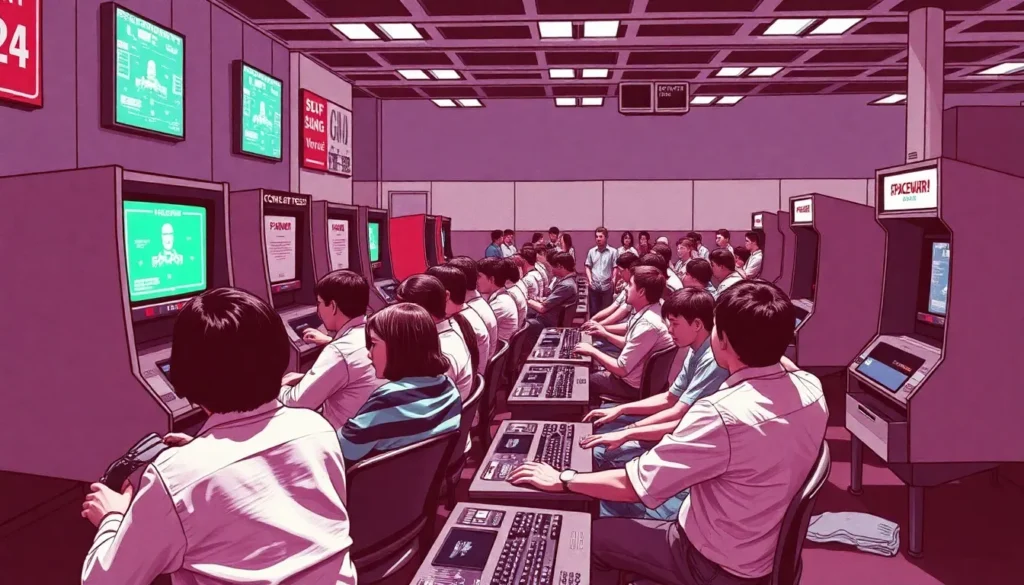Table of Contents
ToggleIn the realm of competitive gaming, the first esports tournament marked a pivotal moment that forever changed the landscape of entertainment. Picture this: a room filled with passionate gamers, the smell of pizza wafting through the air, and the sound of frantic keyboard clicks as players battled for glory. It wasn’t just a game; it was the birth of a phenomenon.
The Rise of Esports
Esports gained momentum rapidly since that first tournament. Gamers flocked to competitions, transforming casual play into professional endeavors. Millions of viewers now watch events online, reflecting a significant shift in entertainment consumption. The game development industry responded with increased funding and sponsorships, fueling growth.
Notable games like “StarCraft” and “Dota 2” became staples in esports, attracting dedicated fanbases. Annual tournaments, such as The International, award millions in prize money, elevating competitors’ status. Brands engage within this landscape to reach expanding audiences, recognizing the demographic’s value.
Additionally, the rise of streaming platforms like Twitch enabled direct engagement between players and fans. Content creators transformed gameplay into a social experience, enhancing visibility for esports. Universities also embraced the change, establishing esports programs that nurture emerging talent.
Statistics showcase the growth trajectory. In 2022, the global esports audience reached 532 million, with a projected value of $1.8 billion by 2025. This surge in interest impacts various sectors, from advertising to merchandising, demonstrating esports’ far-reaching influence.
New opportunities emerge constantly as various industries explore collaborations. Esports does not just entertain; it cultivates community. The atmosphere surrounding tournaments remains electric, inviting newcomers and seasoned fans alike to join the movement.
The First Esports Tournament

The first esports tournament marked a pivotal moment in gaming history. It attracted passionate gamers and set the stage for future competitive events.
Background and Context
In 1972, Stanford University hosted the first known esports tournament, featuring the game “Spacewar!” Participants competed for a prize of a year’s subscription to Rolling Stone magazine. This event laid the foundation for organized gaming competitions. As gaming evolved, so did the scale and scope of these tournaments. By the late 1990s, multiplayer games like “Quake” and “Street Fighter” began driving interest in larger-scale competitions. The rise of the internet facilitated online gameplay, broadening the player base and enticing sponsors to engage in this emerging market. Thus, esports quickly morphed from niche gatherings into major entertainment spectacles.
Key Players and Games
Notable games have propelled esports into mainstream culture. “StarCraft” and “Counter-Strike” were among the first titles to cultivate dedicated professional scenes. Competitive tournaments showcased players’ skills, capturing the attention of millions. Other influential games include “Dota 2,” which features the prestigious International tournament with multi-million dollar prize pools. Major organizations such as Team Liquid and FaZe Clan emerged, helping players transition from casual gamers to professional athletes. Their influence shaped the competitive landscape significantly. Enhanced by streaming platforms like Twitch, these games facilitated direct player-to-fan interaction, further propelling the popularity of esports globally.
Impact on the Gaming Community
The first esports tournament significantly shaped the gaming community by establishing new cultural norms and competitive frameworks.
Cultural Significance
Events like the initial tournament at Stanford University in 1972 marked a pivotal moment in gaming culture. Gamers began to see themselves as part of a community rather than just isolated players. Esports fostered connections, allowing players to bond over shared interests. During this time, fandom blossomed around competitive titles, creating a new genre of entertainments. This shift prompted the development of merchandise, fan events, and forums dedicated to discussions about games and competitions. Notably, esports now influences mainstream culture, with various forms of media, including documentaries and reality shows, spotlighting this burgeoning industry.
Growth of Competitive Gaming
Competitive gaming has expanded rapidly since the early days of esports. Tournaments evolved from small gatherings to large-scale events, drawing in thousands of spectators both online and in-person. The introduction of popular games like “StarCraft” and “Counter-Strike” fueled this growth, attracting international interest. Global viewership reached 532 million in 2022, demonstrating the widespread appeal of esports. Such numbers showcase the industry’s robust potential, which is projected to hit $1.8 billion by 2025. Companies are eager to tap into this lucrative market, actively sponsoring teams and events. Major organizations like Team Liquid and FaZe Clan exemplify how players transitioned from casual gamers to professional athletes, solidifying esports as a key player in the entertainment landscape.
Evolution of Esports Tournaments
Esports tournaments have transformed dramatically since their inception. The journey from early competitions to today’s large-scale events illustrates this evolution.
Milestones in Esports History
In 1972, the first esports tournament took place at Stanford University, featuring “Spacewar!” This event laid significant groundwork for future competitions. The late 1990s saw major multiplayer games like “Quake” and “Street Fighter” launching competitive gaming into the mainstream. The introduction of the internet further widened the player base, facilitating larger tournaments. Games like “StarCraft” and “Counter-Strike” gained massive followings, marking the rise of professional gaming. By 2022, global esports viewership reached 532 million, showcasing the industry’s growth. Significant milestones, including the establishment of professional teams and sponsorships, shaped the landscape, making esports an integral part of popular culture.
Major Tournaments Today
Modern esports tournaments attract millions of viewers and offer substantial prize pools. Events like The International for “Dota 2” and the League of Legends World Championship stand out with multi-million dollar rewards. Teams such as Team Liquid and FaZe Clan compete in these prestigious tournaments, representing the pinnacle of professional gaming. The structure of these events has evolved, featuring online qualifiers leading to grand finals held in massive venues. Sponsorship from major brands enhances these tournaments, highlighting their commercial success. Live streams on platforms like Twitch foster interaction among fans, enhancing the overall experience. Major tournaments have solidified esports’ place in mainstream entertainment.
The first esports tournament marked a pivotal moment in gaming history that set the stage for an industry now worth billions. Its impact resonates through the vibrant community and professional scene that has developed since then. As esports continues to grow and evolve, it remains a testament to the power of competition and camaraderie among gamers. The journey from a small campus event to global spectacles illustrates not just the popularity of gaming but also its cultural significance. With millions of fans and players engaged, esports is firmly established as a major player in the entertainment landscape.




